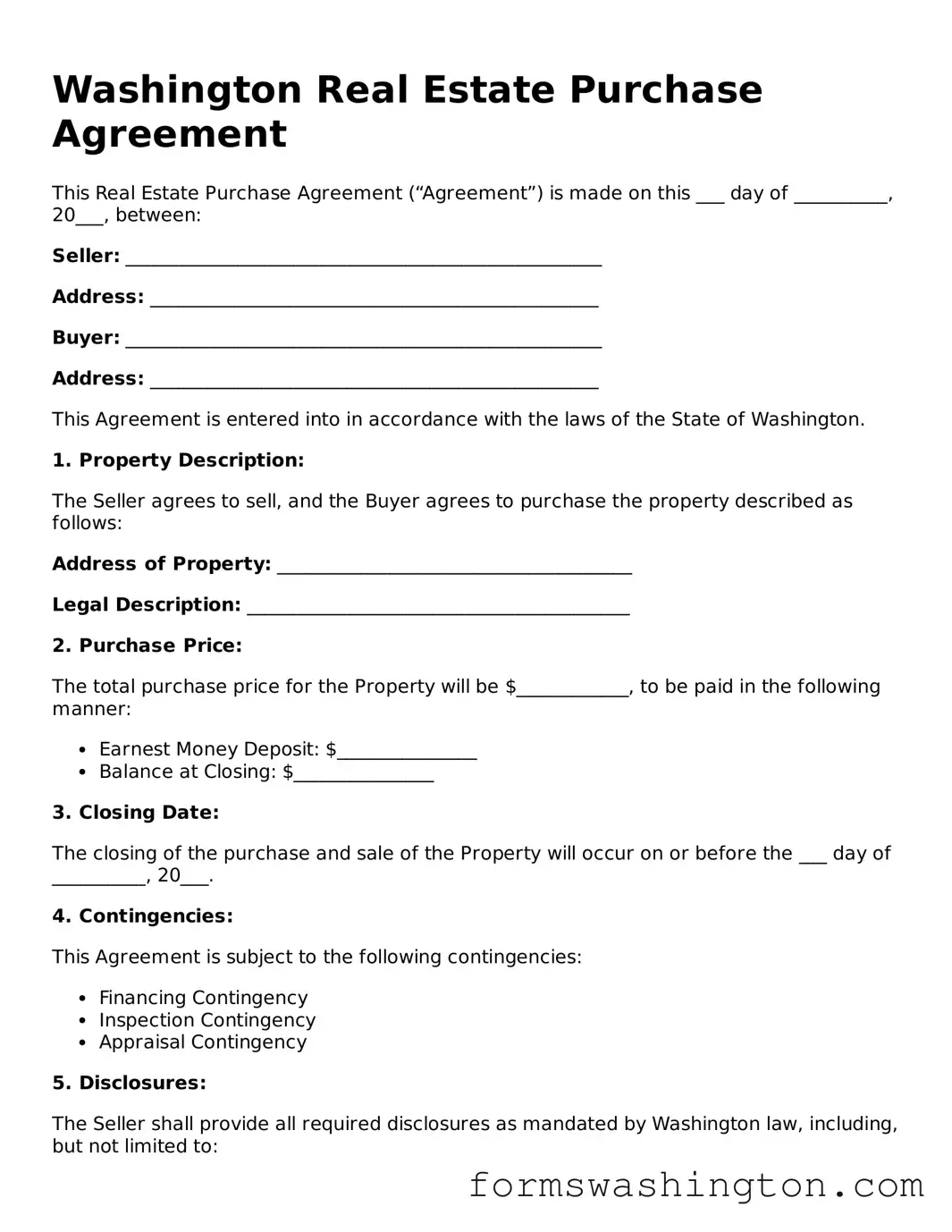Blank Real Estate Purchase Agreement Template for Washington State
The Washington Real Estate Purchase Agreement is a crucial document that outlines the terms and conditions under which a buyer agrees to purchase real property from a seller. This agreement serves to protect the interests of both parties, ensuring clarity and legal compliance throughout the transaction. Understanding its components is essential for anyone involved in the real estate market in Washington State.
Open Editor Here
